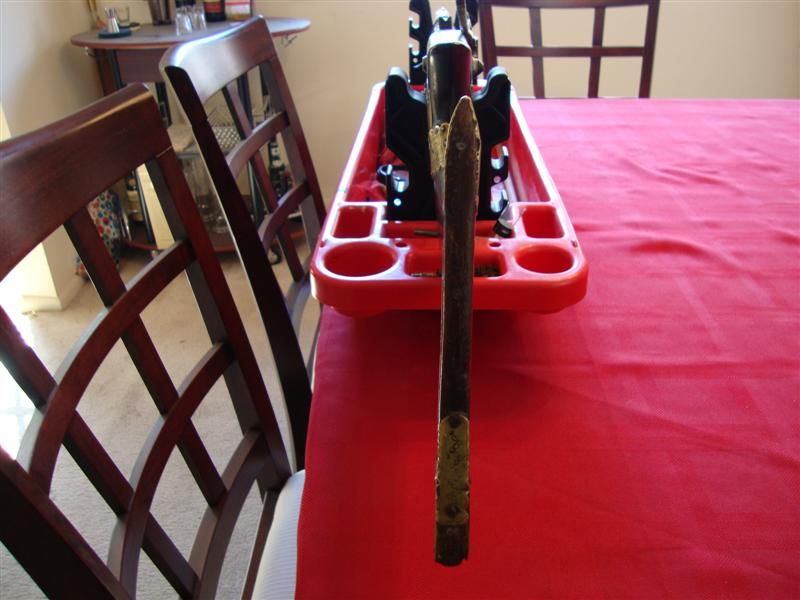- Joined
- May 24, 2005
- Messages
- 5,455
- Reaction score
- 5,242
Hello all. Now for something different. :haha:
This percussion rifle was made in Sind (Also known as Sindh) around the middle 19th Century. Sind is an area between India and Packistan. A real "camel gun". :haha: Complete with original sling and beaded decoration that was hanging on the sling. Actually, this gun is very well made coming from that part of the world. Very well made barrel, and lock internals almost equal to European standards. I'm currently in the process of cleaning the barrel. Surprisingly, very little surface rust. But lots of dirt and gunk from the last 150 years or so. Lots of JB Compound, brushes, solvents, and a ton of cleaning patches :shake: But, each dry patch looks better than the previous. So, I'll keep at it. The only mystery is the nipple. A musket cap is too large. A #11 too small. Hmmmm :idunno: I've been soaking the nipple area with a good penetrating fluid, waiting 2-3 days, and trying to get it out. Next I'll try heat. As you may have determined by now, I plan to shoot this gun. Very thick barrel walls and so far, the interior of the barrel looks good with no chips on the rifling I can detect. A more thourgh cleaning will tell. Now that the barrel is getting cleaner, the patches are not hanging up like they did at first. Any/all suggestions/recommendations appreciated. If I can get it done this fall I'll do a Range Report. Should be a blast. Meantime, enjoy the pics.
Specs: Stock: Rosewood from the Malbar Coast. Barrel: 36 3/4" long, swamped and flared at the muzzle, 1 3/8" breech, 1 1/16" at the muzzle, .42 cal. (mics .416), 7-groove rifling. Lock: Percussion, locally made - half and full cock positions. Weight of gun: 10-lbs. on the nose.
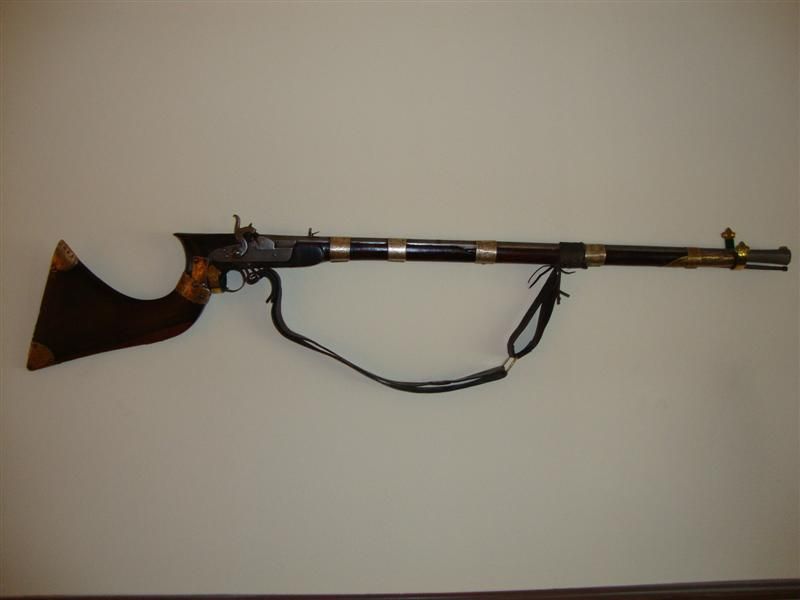
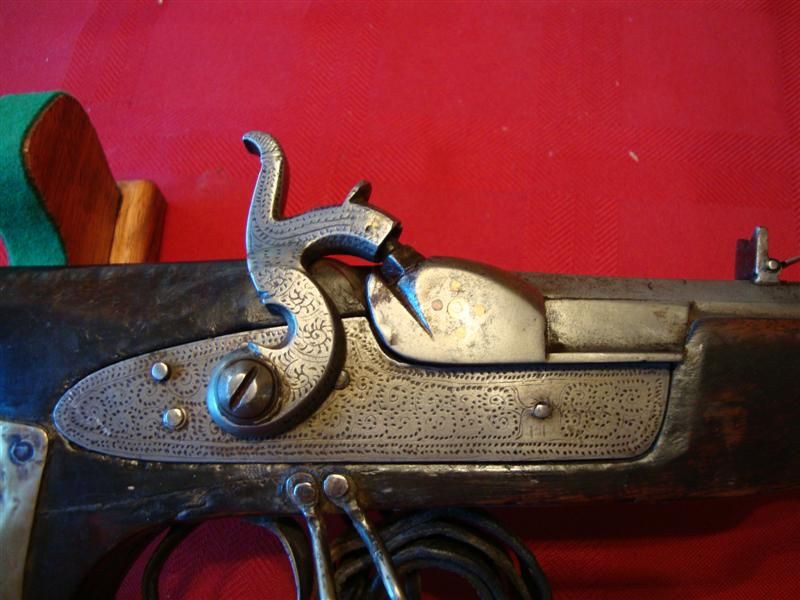
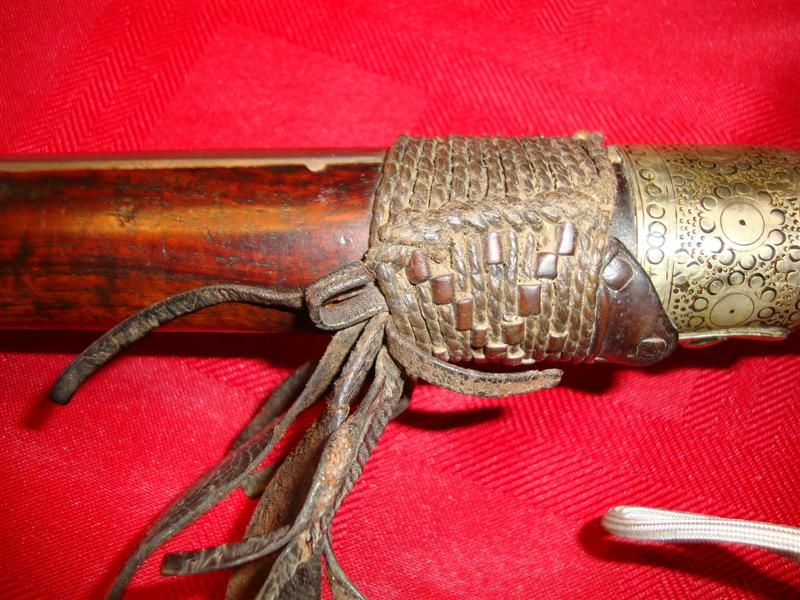
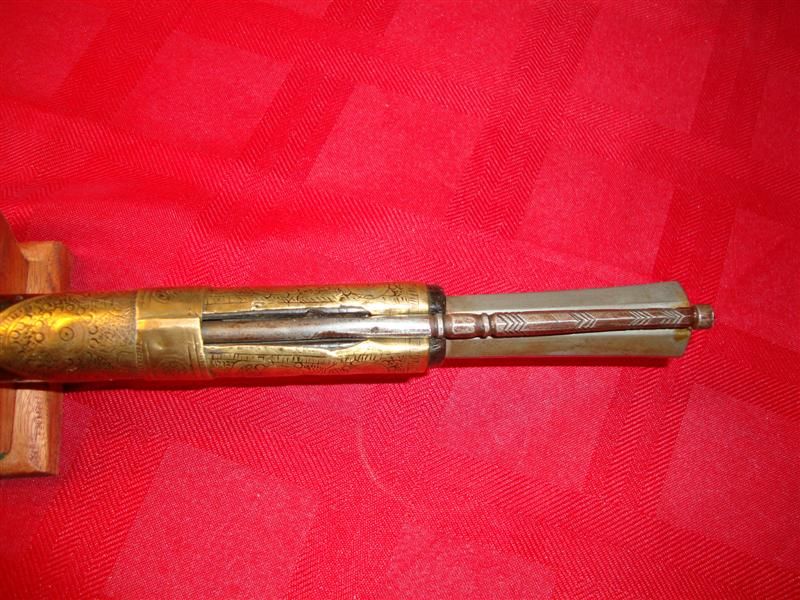
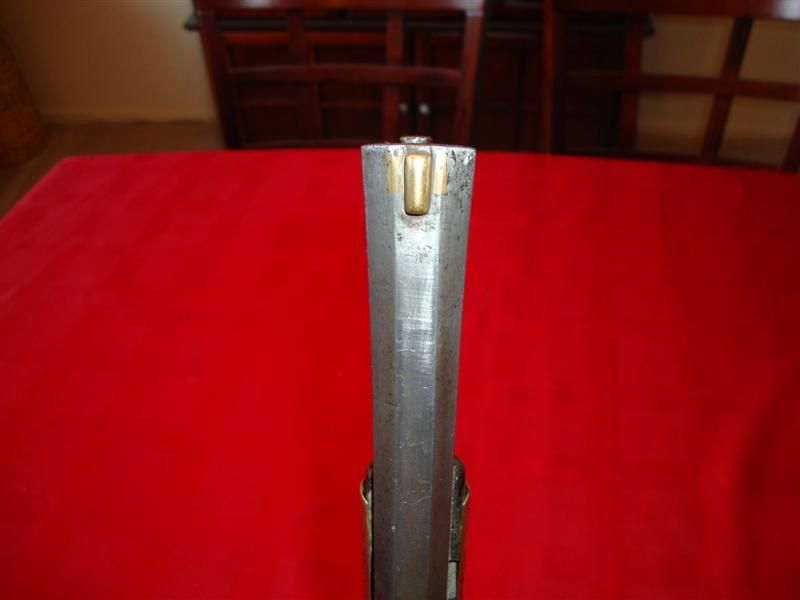
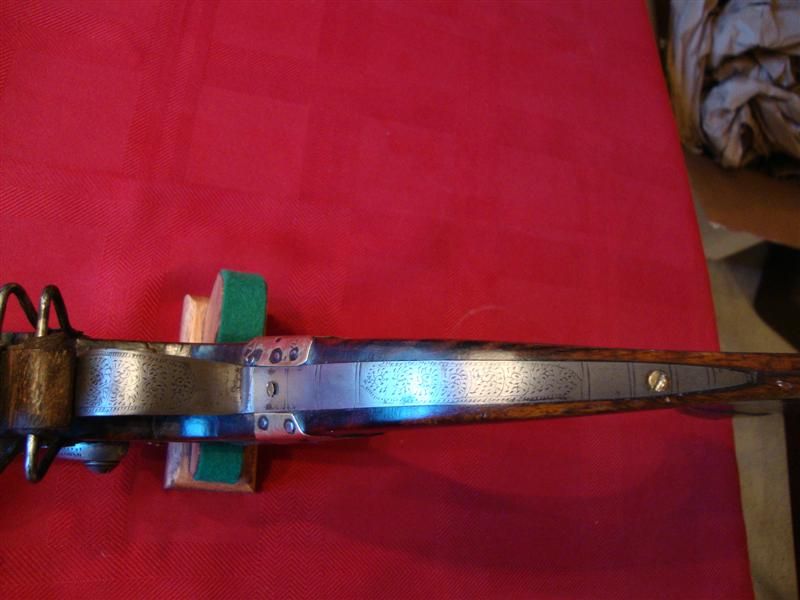
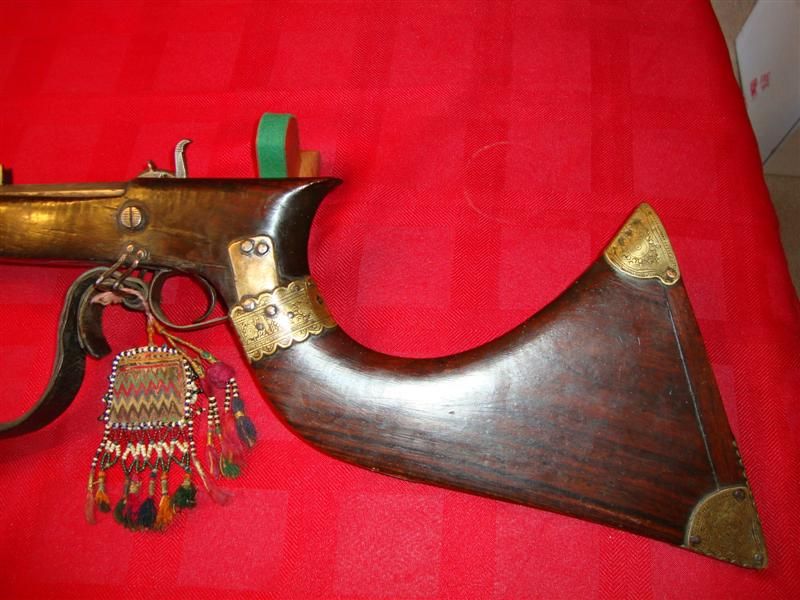
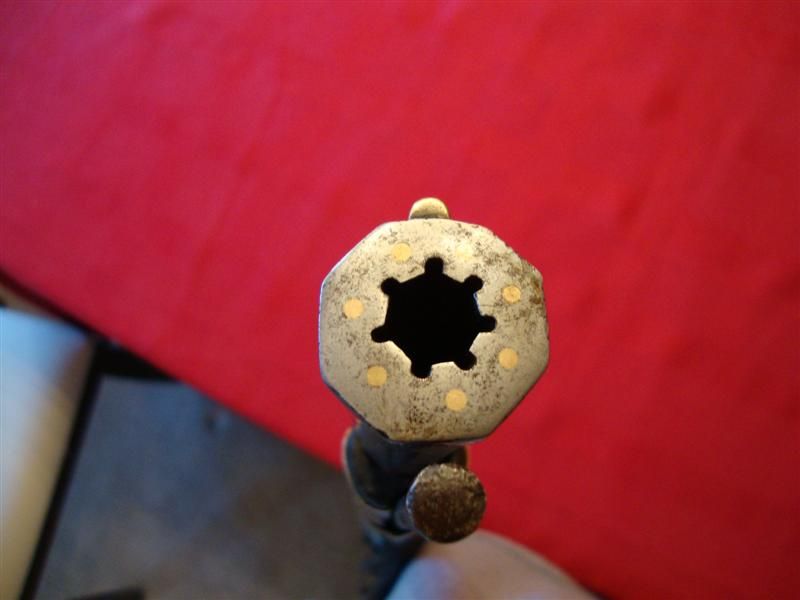
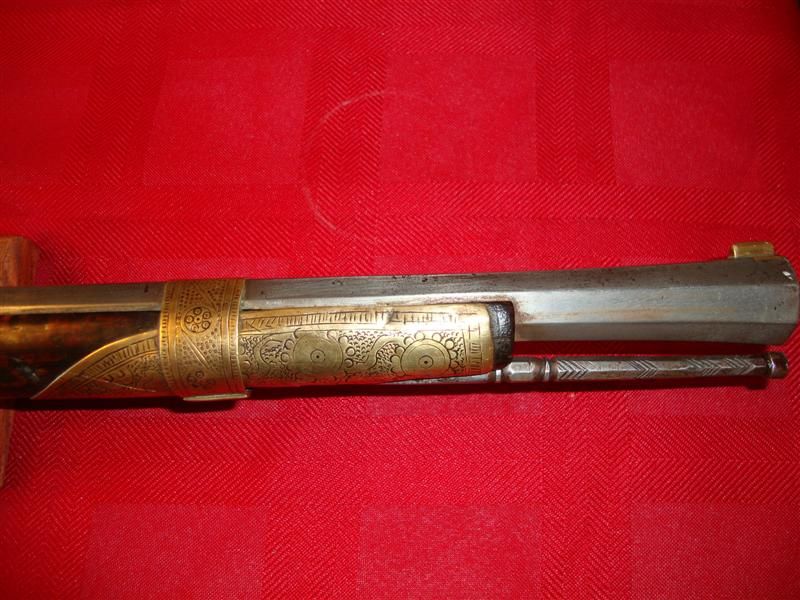
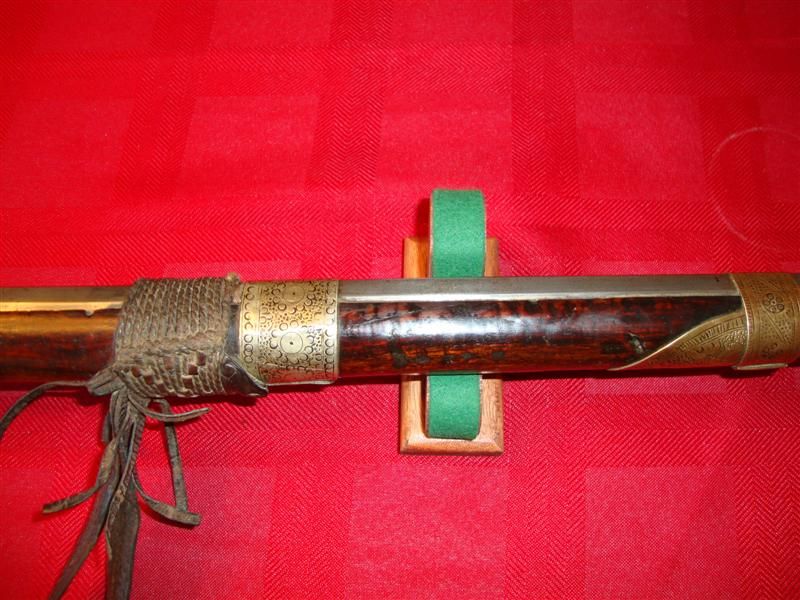
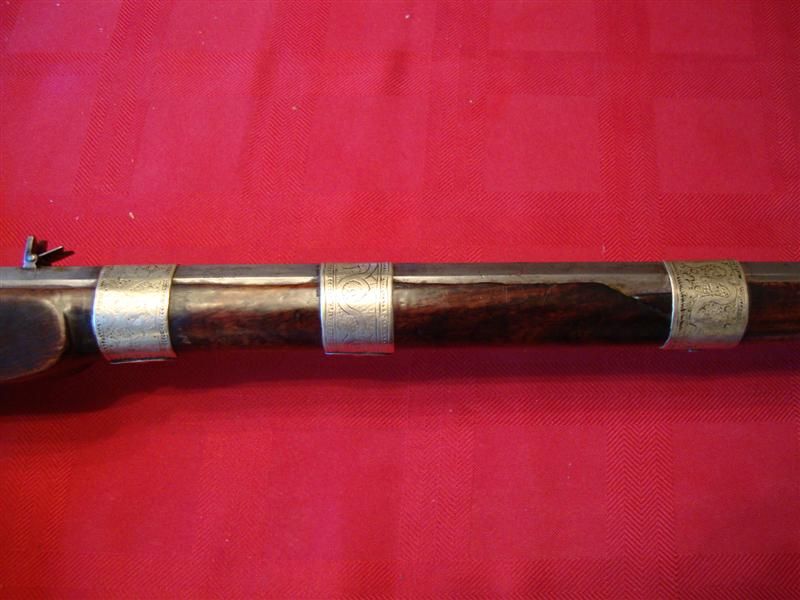
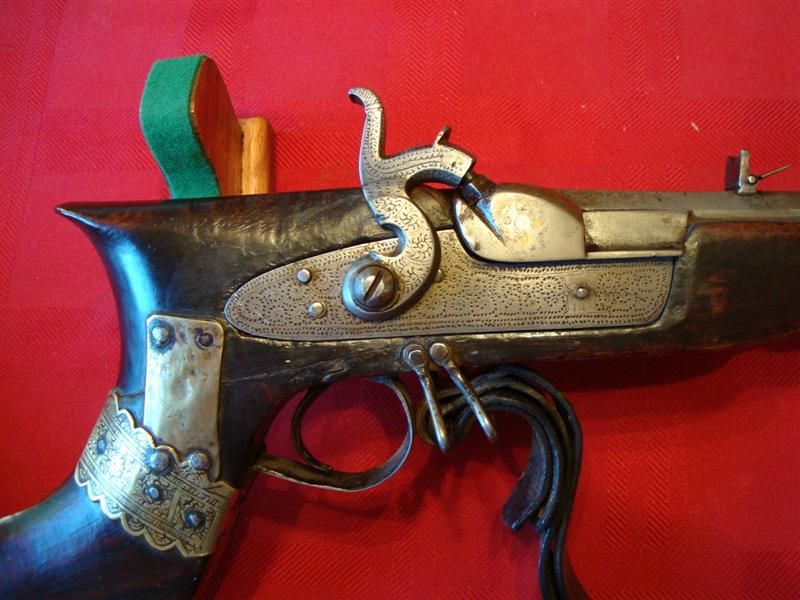
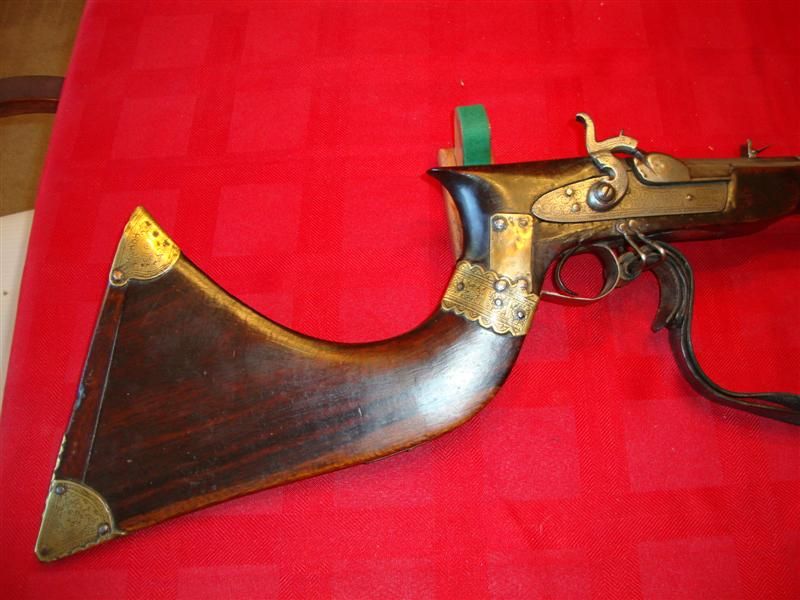
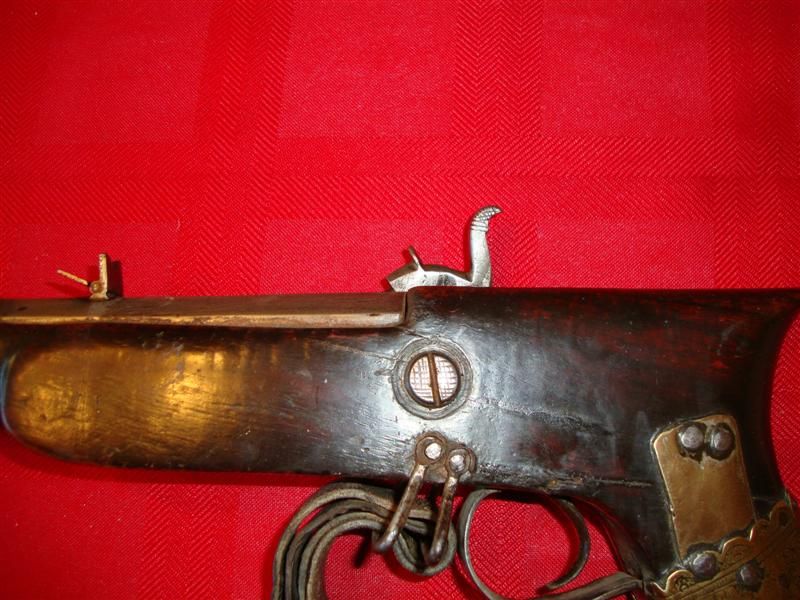
This percussion rifle was made in Sind (Also known as Sindh) around the middle 19th Century. Sind is an area between India and Packistan. A real "camel gun". :haha: Complete with original sling and beaded decoration that was hanging on the sling. Actually, this gun is very well made coming from that part of the world. Very well made barrel, and lock internals almost equal to European standards. I'm currently in the process of cleaning the barrel. Surprisingly, very little surface rust. But lots of dirt and gunk from the last 150 years or so. Lots of JB Compound, brushes, solvents, and a ton of cleaning patches :shake: But, each dry patch looks better than the previous. So, I'll keep at it. The only mystery is the nipple. A musket cap is too large. A #11 too small. Hmmmm :idunno: I've been soaking the nipple area with a good penetrating fluid, waiting 2-3 days, and trying to get it out. Next I'll try heat. As you may have determined by now, I plan to shoot this gun. Very thick barrel walls and so far, the interior of the barrel looks good with no chips on the rifling I can detect. A more thourgh cleaning will tell. Now that the barrel is getting cleaner, the patches are not hanging up like they did at first. Any/all suggestions/recommendations appreciated. If I can get it done this fall I'll do a Range Report. Should be a blast. Meantime, enjoy the pics.
Specs: Stock: Rosewood from the Malbar Coast. Barrel: 36 3/4" long, swamped and flared at the muzzle, 1 3/8" breech, 1 1/16" at the muzzle, .42 cal. (mics .416), 7-groove rifling. Lock: Percussion, locally made - half and full cock positions. Weight of gun: 10-lbs. on the nose.



















